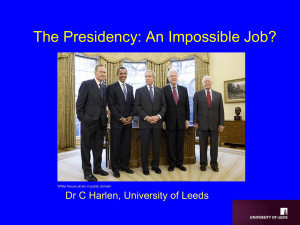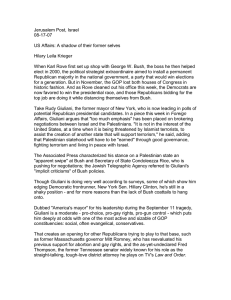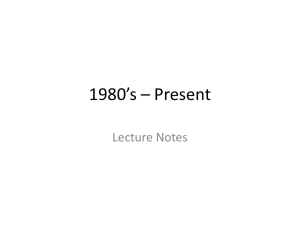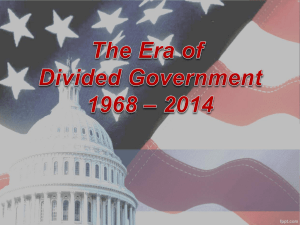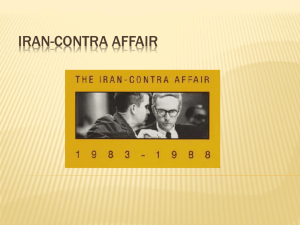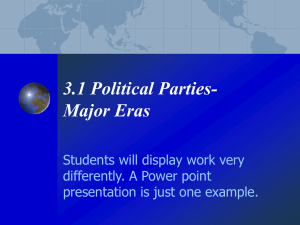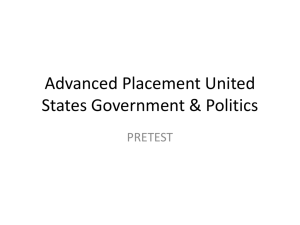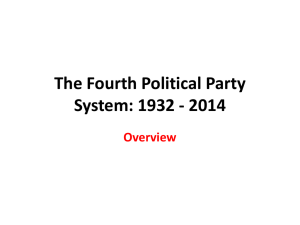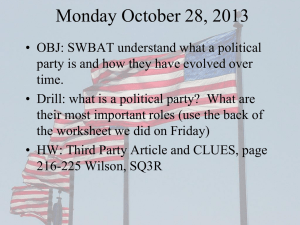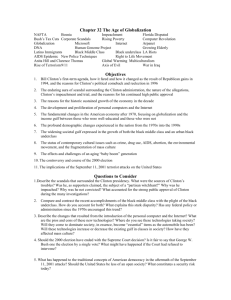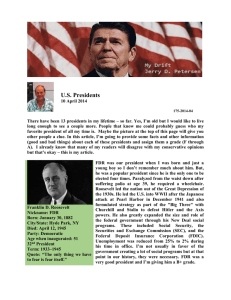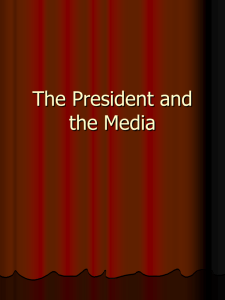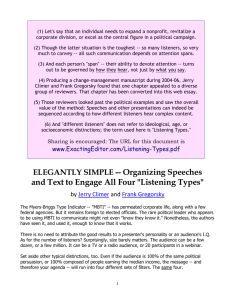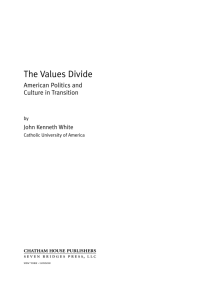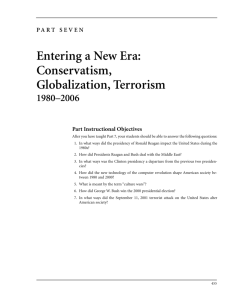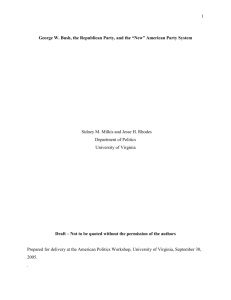If Republican and Democratic presidencies have indeed reversed
advertisement
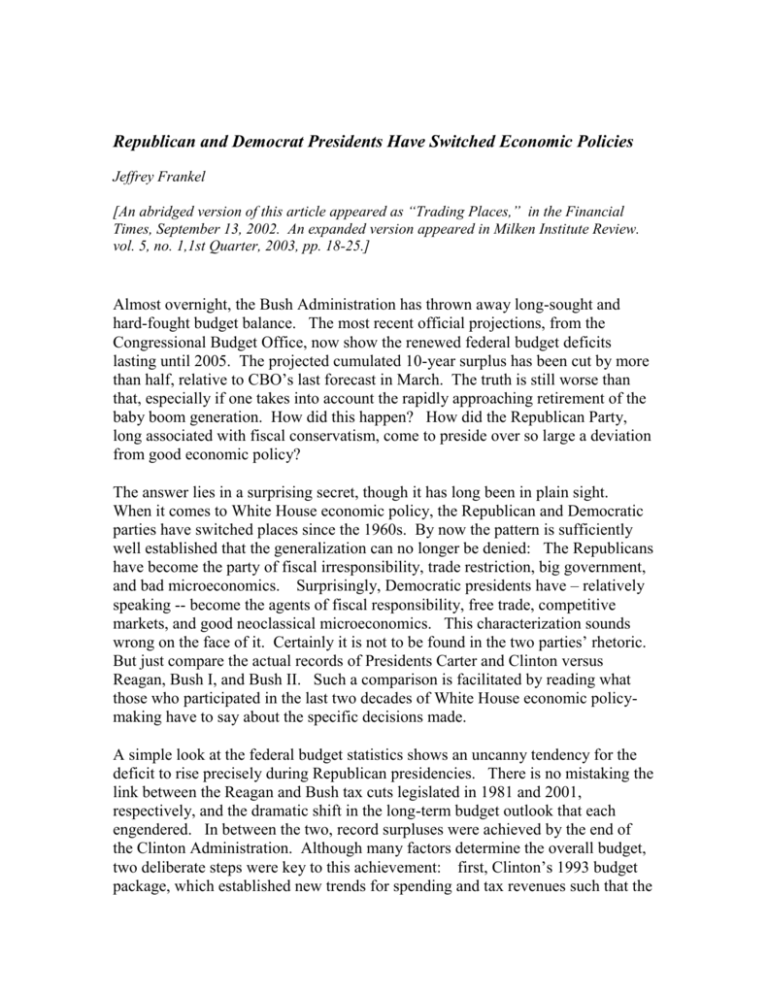
Republican and Democrat Presidents Have Switched Economic Policies Jeffrey Frankel [An abridged version of this article appeared as “Trading Places,” in the Financial Times, September 13, 2002. An expanded version appeared in Milken Institute Review. vol. 5, no. 1,1st Quarter, 2003, pp. 18-25.] Almost overnight, the Bush Administration has thrown away long-sought and hard-fought budget balance. The most recent official projections, from the Congressional Budget Office, now show the renewed federal budget deficits lasting until 2005. The projected cumulated 10-year surplus has been cut by more than half, relative to CBO’s last forecast in March. The truth is still worse than that, especially if one takes into account the rapidly approaching retirement of the baby boom generation. How did this happen? How did the Republican Party, long associated with fiscal conservatism, come to preside over so large a deviation from good economic policy? The answer lies in a surprising secret, though it has long been in plain sight. When it comes to White House economic policy, the Republican and Democratic parties have switched places since the 1960s. By now the pattern is sufficiently well established that the generalization can no longer be denied: The Republicans have become the party of fiscal irresponsibility, trade restriction, big government, and bad microeconomics. Surprisingly, Democratic presidents have – relatively speaking -- become the agents of fiscal responsibility, free trade, competitive markets, and good neoclassical microeconomics. This characterization sounds wrong on the face of it. Certainly it is not to be found in the two parties’ rhetoric. But just compare the actual records of Presidents Carter and Clinton versus Reagan, Bush I, and Bush II. Such a comparison is facilitated by reading what those who participated in the last two decades of White House economic policymaking have to say about the specific decisions made. A simple look at the federal budget statistics shows an uncanny tendency for the deficit to rise precisely during Republican presidencies. There is no mistaking the link between the Reagan and Bush tax cuts legislated in 1981 and 2001, respectively, and the dramatic shift in the long-term budget outlook that each engendered. In between the two, record surpluses were achieved by the end of the Clinton Administration. Although many factors determine the overall budget, two deliberate steps were key to this achievement: first, Clinton’s 1993 budget package, which established new trends for spending and tax revenues such that the two paths converged later in the decade; and, second, his 1998 “Save Social Security first” strategy, which successfully blocked Congressional desires either to cut taxes (Republicans) or raise spending (Democrats) and thus preserved the new surpluses. The history is clear in a new book containing recollections by such Clintonite figures as Rubin, Summers, Tyson, Barshefsky, Sperling, and Reich, together with Republican counterparts and neutral observers.* The list of examples over the last quarter century extends well beyond the budget. Republicans are supposed to place more emphasis on fighting inflation. But, in practice, Presidents Reagan and Bush I pressured the Fed to ease up on monetary policy, while Clinton deliberately and unprecedentedly let Alan Greenspan do his job.** Republicans are supposed to support small government, but federal employment rose under Presidents Reagan and Bush, and shrank under Clinton. Republican presidents have been big on free trade rhetoric. But their actions have in fact been protectionist, judged not just by some politics-free ideal, but as compared to the record of Clinton. Highlights include George W. Bush’s tariffs on steel and lumber and Ronald Reagan’s voluntary export restraints on autos. And the trend toward deregulation that most imagine began in the Reagan Administration? It actually began in the Carter Administration – in airlines, trucking, natural gas, and banking. Reagan at best continued the trend. These characterizations are shared by economists from across the political spectrum, as is clear in both the 1990s book, and in the earlier 1980s book on which it was modeled.*** The current administration’s support of large subsidies to agriculture and to exploitation of natural resources takes the pattern to further heights. This is not to say, of course, that Democratic presidents have done everything right, nor Republican presidents everything wrong. Jimmy Carter’s initial energy policy and Bill Clinton’s initial health care policy were misguided. Ronald Reagan’s firing of the air traffic controllers, who were striking in violation of their contracts, was much admired by economists. George H. W. Bush’s 1990 decision to revoke his “no new taxes” campaign pledge was a brave step, which ranks of equal importance with Clinton’s two measures, in establishing a path toward eventual budget balance. Nevertheless, it is striking how many examples go the other direction, and how seldom expressed is that assessment. If Republican and Democratic presidencies have indeed reversed roles, what is the explanation? I am not sure. After all, the Democrats in Congress, on average, are still less supportive of free trade and small government than the Republicans. Perhaps an explanation stems precisely from the fact that Democrats remain saddled with the image of big government. For that reason wary voters would never elect a Democrat president in the first place, unless he had specifically exhibited the will and ability to grapple effectively with the problems of government’s role in the economy. The public seems willing, however, to accept Republican presidents who believe that it is enough to adopt the rhetoric of small government, even while their actions have the opposite effect. It is easy to fall into the trap of thinking that governing is easy. Governing is not easy; it is very difficult. If a presidential candidate believes that everything is a simple question of good versus evil, then he is not prepared for the painstaking work of acquiring detailed information, making logical analysis of tradeoffs, and confronting difficult political interest groups. But that is what intelligent economic policy decisions in Washington require. If a president takes office thinking that good policymaking is a simple matter of declaring his desire to oppose evil-doers, favor small government and eliminate “waste, fraud and abuse,” he is ill-prepared for the complexities of the job. Excessive size and interventionism of big government come about, not primarily because of moral failings of Washington politicians and bureaucrats, but rather because we, the citizens, each want something from the government. Most farmers truly believe that they oppose big government, but that “farm supports are different.” The same is true of loggers, steelworkers, energy executives, and every other interest group. Resisting the appeals of such specific interests well enough to safeguard the welfare of the whole requires more than that the president give small-government speeches. It even requires more than that he sincerely believe that he favors small efficient government. It requires hard work, knowledge, ability to absorb and synthesize facts, analysis, ability to communicate, and willingness to trade off issues when constraints make it appropriate while taking unpopular stands when required. Jeff Frankel is Harpel Chair of Capital Formation and Growth, Harvard University; he was a Member of the U.S. Council of Economic Advisers, 19971999. * American Economic Policy in the 1990s, edited by Jeffrey Frankel and Peter Orszag, MIT Press, Cambridge MA, 2002. ** Bob Woodward, Maestro: Greenspan’s Fed and American Boom, New York, Simon and Schuster, 2000. *** American Economic Policy in the 1980s, edited by Martin Feldstein, University of Chicago Press, Chicago IL, 1994.
